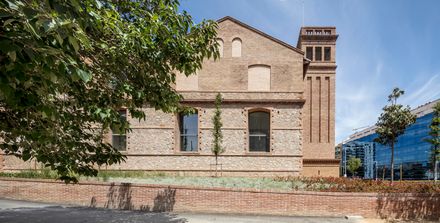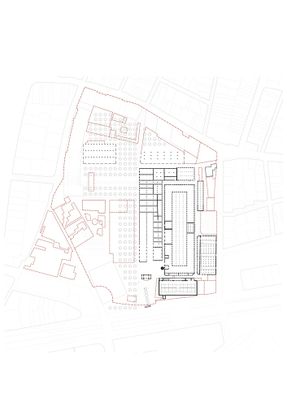EMAV Can Batlló
LOCATION
Spain
CATEGORY
Elementary & Middle School
AREA
7611 M²
LEAD ARCHITECTS
Josep M. Julià I Capdevila
DESIGN TEAM
Jordi Gorgues, Alfons Güell, Aina De Montserrat
CLIENTS
Consorci De L’educació De Barcelona
ENGINEERING
Tdi Enginyers
CONSULTANTS
At3 Oller Peña
COLLABORATORS
Jordi Payola
Text description provided by architect.
Built in 1878 on the plots of Can Mangala, the Can Batlló compound shares a long history of growth and transformation with Barcelona. The city’s industrial heyday saw the complex expand and new buildings rise.
Over time, however, these fell into disuse, culminating in a recent community-led initiative to repurpose the largely abandoned structures.
This project, which develops the programme for a media school in the compound´s 7th nave, is the cornerstone of a larger effort to open Can Batlló to the Gran Vía and the greater public.
In approaching this project, the Barcelona-based architect vowed to respect the architectural heritage of the building, maintain its original typological traits and make their additions completely reversible.
These commitments undergird the layout of the school and govern how it interacts with the preexisting features of the nave.
The trusses of the first floor, on the other hand, lend themselves to wider and more open spaces. It is here that the more spacious facilities are located.
The project, likewise, takes full advantage of the ground floor’s height, where a two-storied central structure has been installed.
Finally, to consolidate the compound’s aperture, the building was finished off with a highly visible ornate roof – treated as a fifth façade – and a sloped garden, both of which face the Gran Vía.
From afar, these guarantee total privacy but are fully transparent from up close.
However, since it occupies only half a bay, it also generates an open area that can be alternately used as a foyer, a working area for students or as an exhibition gallery.
In the ground floor, for instance, the modular pillar structure was adapted and reconverted into a series of classrooms.
On its first level, this piece houses the classrooms, and, on the second, the administrative offices. While the lower level is fundamentally inward-looking, the upper one boasts commanding views of the Gran Vía and the Can Batlló Park.
The structure’s strategic location, in turn, organizes the surrounding areas, which include a reception, a media library and student lockers. A similar structure was installed on the first floor.
The piece itself houses radio booths, practice rooms, changing rooms and photography studios.
The floor’s second bay, in contrast, is home to a TV set, a theater and a cinema. All of these require large structural spans and absolute acoustic insulation.
In other cases, the architects sought to pay homage to the building’s industrial past, recreating its original typological traits: order, repetition, and simplicity.
By incorporating broken and deteriorated pieces that have been salvaged, they bear testament to the building’s history and its various phases of construction.
Its current facet, for example, is intimated through the in-filled apertures of the first floor, which suggest that the nave has been given a new use.
Indeed, it is in keeping with these principles, that a series of wooden fins were placed around the new, inner structures. Both of the structures placed on the ground and first floor are free standing and completely reversible pieces.





















